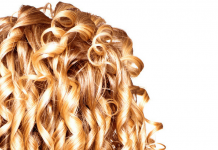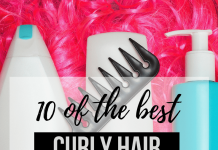Everyone wants a full, lush, healthy head of hair, but when you’re dealing with thin, damaged locks, nothing can seem further from possible. Thankfully, there are a few ways you can protect your hair from further damage and encourage it to grow thicker, fuller, and longer. Here are eight tips for hair growth that you can start using right now, for a better head of hair, faster.
1. Take a look at your diet.
Just like with your entire body, your hair relies on proper nutrition in order to stay looking its best. If you’re not getting all your vitamins and nutrients, or if you know that your diet is all-around poor, look at how you can improve, whether that’s via supplements or simply adding more fruits and veggies into your daily life. Not only will your hair thank you, but you’ll see improvements in other areas of your body as well, from your skin to your waistline.
There are special hair growth vitamins and supplements available, which provide you with a quick hit of the proper blend of vitamins and minerals that specifically help hair growth. However, these won’t be as effective for you if your diet as a whole is restrictive or poor, and many only really work if you have a deficiency that you need to address anyway.
2. Avoid any extra damage caused by your style.
Everyone naturally loses hair strands every single day, but that doesn’t mean that you can’t actively avoid any extra, unneeded hair damage that’s going to undo any work that you put into encouraging your hair’s growth.
When you can, avoid heated hair tools, such as straighteners and hair dryers. If you find that you absolutely need these types of tools in order to style your hair, use a thermal protectant spray that will protect your hair from the heat.
You can also avoid extra damage by opting to wear your hair loose at night (versus in a ponytail or braid) and by avoiding hairstyles that pull or stress your hair.
Similarly, lay off the dye and other harsh chemicals for a while. You can also skip shampooing, as well as rinse your mane with cold water, to lock in your hair’s moisture. Remember: conditioned, soft, smooth hair is healthy hair.
3. Swap out your pillowcase.
Did you know that your pillowcase can actually cause breakage and damaging tangles? If you have a cotton pillowcase, you may find that you wake up with matted or tangled hair that ends up breaking when you go to style it for the day. Swap out your traditional cotton pillowcase for a silk variant to stop this.
4. And swap out your towels, too!
Similarly, your towels could also be causing damage that limits your hair’s growth. If you have a habit of twirling your hair up into a towel turban after a shower, you’re likely causing hair stress and loss. You don’t have to stop wrapping your wet hair completely in order to stop this, though; instead, all you need to do is swap out your traditional towel for a t-shirt towel or microfiber towel, both of which cause less stress.
5. Add some essential oil to your shampoo.
Essential oils have been shown to help with hair growth. Add a few drops of pumpkin seed oil into your shampoo and you could see hair count increase by as much as 40%! Other safe and helpful essential oils to try include peppermint oil and rosemary oil.
6. Give your hair its caffeine fix.
Just like your morning cup of joe gets you on the go, your hair could benefit from some caffeine, too. New shampoos are coming on the market that includes caffeine as an ingredient, as studies show that caffeine can actually promote hair growth. Consider adding one to your routine!
7. Look at your scalp.
Get down to the roots and you may just discover the root of your hair growth problem: clogged and unhealthy hair follicles. Look after the health of your scalp just the way you would the health of your hair, by choosing products that keep your scalp soft and smooth. If it’s making you feel either too greasy or too dry, then it’s probably not a product for your individual needs.
8. Put down the vape.
If you smoke at all, you could be seeing less hair growth as a result. Smoking restricts blood flow to your scalp, meaning you’re getting less oxygen and nutrients to your hair follicles. Disrupted and slowed growth are the result.













